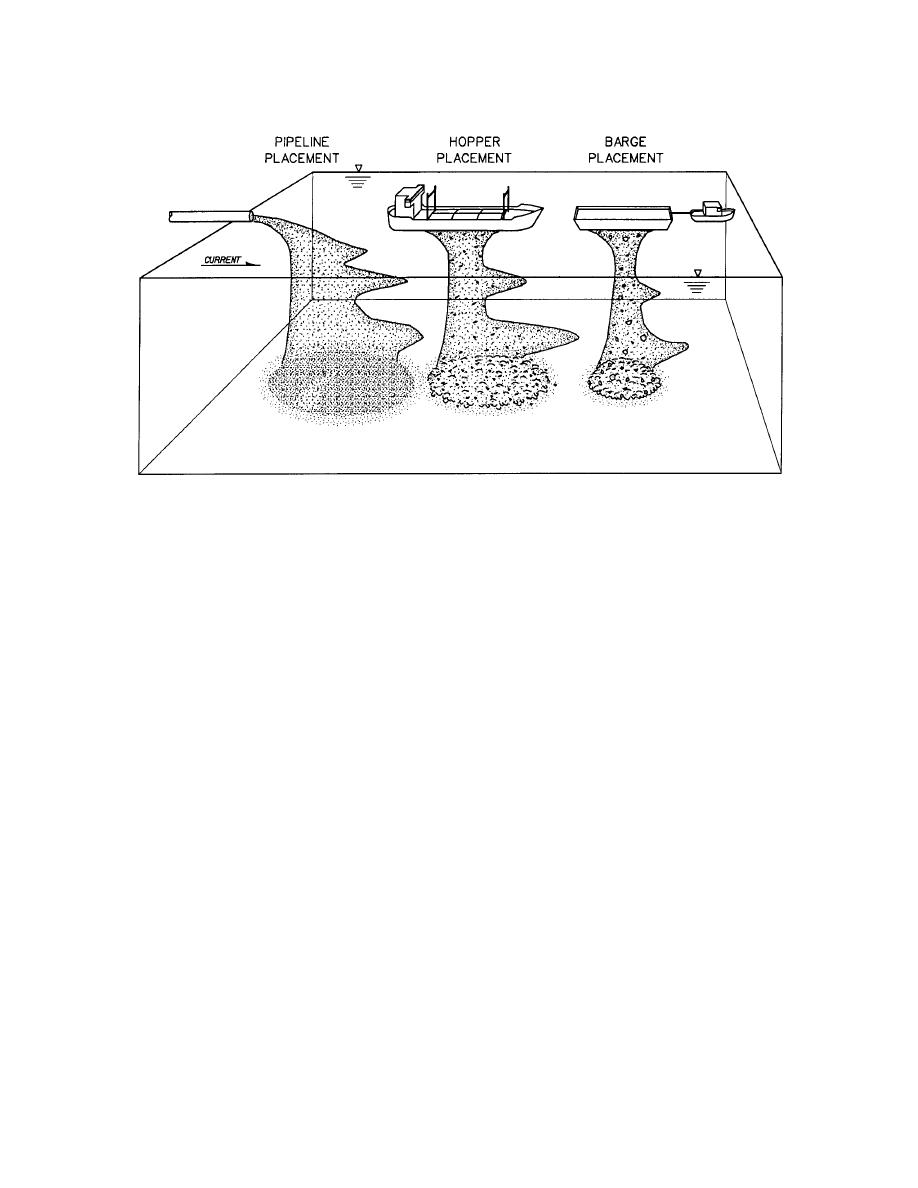 |
||
|
|
||
|
Page Title:
Figure 2-2. Open-water Placement Operations |
||
| |||||||||||||||
|
|
 Framework for Dredged Material Management
May 2004
Figure 2-2. Open-water Placement Operations
Pipeline dredges are commonly used for open-water disposal adjacent to
channels. Material from this dredging operation consists of a slurry with solids
concentration ranging from a few grams per liter to several hundred grams per liter.
Depending on material characteristics, the slurry may contain clay balls, gravel, or coarse
sand material. This coarse material quickly settles to the bottom. The mixture of dredging
site water and finer particles has a higher density than the disposal site water and
therefore can descend to the bottom forming a fluid mud mound. Continuing the
discharge may cause the mound to spread. Some fine material is "stripped" during
descent and is evident as a turbidity plume. Characteristics of the plume are determined
by: discharge rate, characteristics of the slurry (both water and solids), water depth,
currents, meteorological conditions, salinity of receiving water, and discharge
configuration.
The characteristics and operation of hopper dredges result in a mixture of water
and solids stored in the hopper for transport to the disposal site. At the disposal site,
hopper doors in the bottom of the ship's hull are opened, and the entire hopper contents
are emptied in a matter of minutes; the dredge then returns to the dredging site to reload.
This procedure produces a series of discrete discharges at intervals of perhaps one to
several hours. Upon release from the hopper dredge at the disposal site, the dredged
material falls through the water column as a well-defined jet of high-density fluid, which
may contain blocks of solid material. Ambient water is entrained during descent. After it
hits bottom, most of the dredged material comes to rest. Some material enters the
horizontally spreading bottom surge formed by the impact and is carried away from the
impact point until the turbulence of the surge is sufficiently reduced to permit its
deposition.
11
|
|
Privacy Statement - Press Release - Copyright Information. - Contact Us - Support Integrated Publishing |